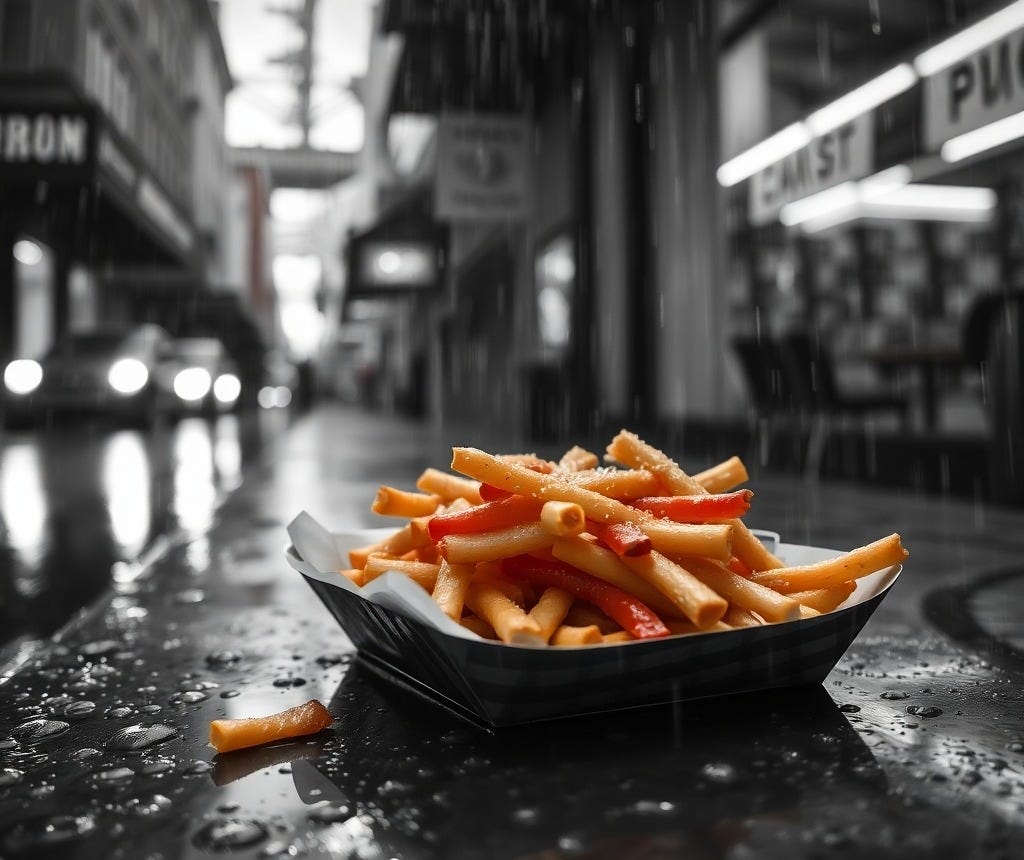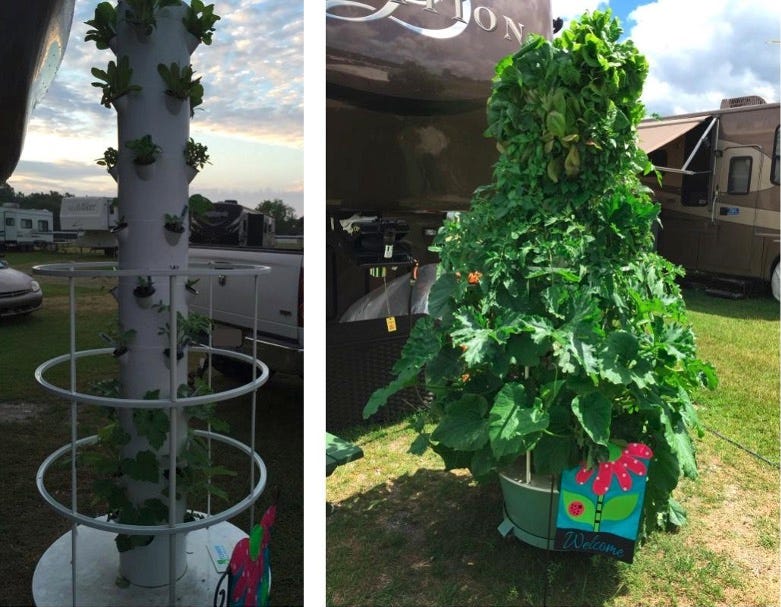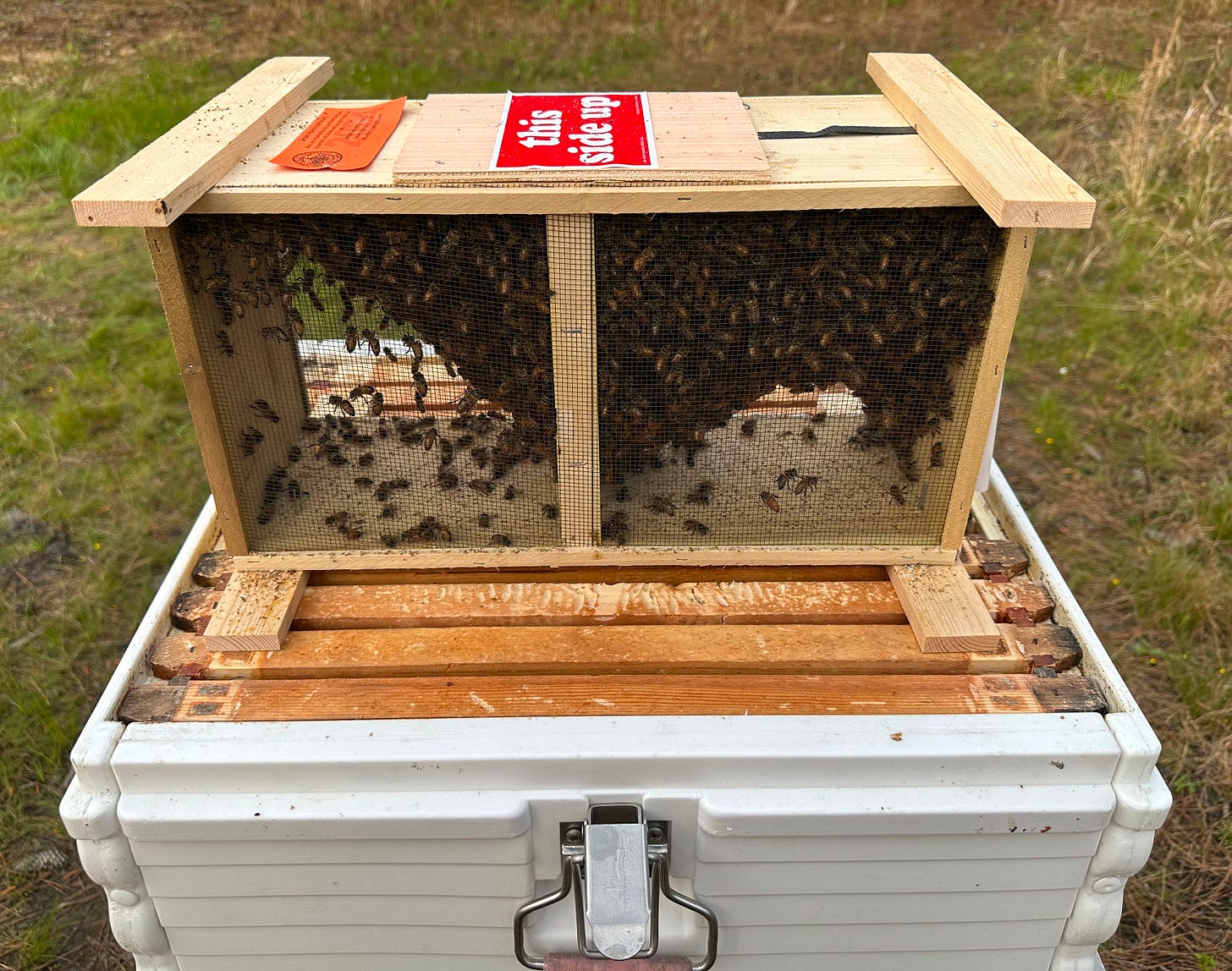04 - A Garden of Harsh Realities: Reclaiming the Lost Art of Feeding Your Family
THE RESILIENT PATH: Forging Your Unshakable Life
For nearly two decades now, I’ve slowly “peeled back the onion” on food: growing your own, quality, nutrition, salt, cooking oils, pesticides, toxins, PH, preservation, and storage – these are so important, each could easily be a chapter itself.
BEING RESILIENT TIP: I recommend the 80/20 rule when it comes to food. Do your best to use the following experience and recommendations 80% of the time. If you like vanilla butter cream birthday cake, then eat some once in a while, just not every day. Strive to get to 90/10, but in general enjoy your favorite food and drink and do your best to keep it to a maximum of 20% of the time!
Growing your own food
I don’t know about you, but I know only a handful people in my network of a few thousand family and friends who can grow their own food to feed a family. That doesn’t say much for our current situation and should be a wake-up call to you. In the early 1900’s about 80% of the US population could feed themselves off the land with the resources they had. The other 20% lived in cities and in situations where they could not or would not grow their own food. Today, those figures are about opposite, where maybe 10 or 15% of Americans can feed themselves and rest cannot!
Growing food to feed you and your family is much harder than you think. Pests, animals, weather, soil quality, water quality, extreme weather events, your time and your experience are the factors that make up your ability to grow food effectively – that’s a lot of variables!
Quality
This is a real problem in America.
Casey and Calley Means have done an outstanding job explaining why in their book “Good Energy”.
In short – consuming excessive amounts of processed food is slowly shortening your life and making you sick. The best thing I ever learned and started doing in terms of food quality is to “eat closest to nature”. Fewer ingredients on food package labels = less processing.
Example: instead of eating an almond cookie, eat some RAW almonds instead - but like anything else, don't over-do it!
Nutrition
Processed foods today have very little nutritional value! Organic food is worth the price...you know why? Because what you’re not paying now for highest quality food you’ll be paying for later in the form of misery, pain, expensive healthcare bills and lower quality of life!
Like anything else, don’t go crazy and do what you can afford, just know that it matters. Fast food tastes great but is nothing but junk fillers and provides low nutrition.
Cooking Oils
In my experience, there are only a few types of oils to use regularly for cooking: high-quality olive, coconut, avocado or cold-pressed peanut oil. Know your sources! Other cooking oils are highly processed with toxic solvents - consider them to be in some way, shape or form suspect to your long-term health when consumed in excess.
There’s a growing amount of research showing this to be the case and just know that it’s not good.
If I’m going to deep fry fish or something else on a special occasion, I use a high quality, organic, cold-pressed peanut oil. Olive and coconut are not suitable for deep frying at higher temps and should be used for low or medium heat pan frying only.
Pay attention to every food label to see if there are any oils other than olive, coconut or peanut used in them or in the preparation process. Always keep the 80/20 rule in mind. The next time you look at a bag of “Roasted Almonds” in the store, just check out the label...
Pesticides
I have only one thing to say about them – use them only as a last resort.
Toxins
All things considered, we have it pretty good in the US. If you’ve ever been to China, India or Mexico, you know why! We’re not perfect by any means here in the US, but we are doing better than most. Growing our food in good soil and clean water matters, so do your very best to make sure you’re keeping toxins out of the soil, water and air around you.
PH
Each food item we consume has an effect on our body’s PH. I discuss this at length in a later chapter and help you understand why it matters.
Preservation
With the events unfolding in front of us, food preservation must be a priority for you. The most reliable and practical methods of long-term storage in my experience are canning and freeze drying. There are other methods...however, these two are proven and work best for the importance of this topic. Canning is fairly cost-effective, with freeze-drying being more expensive to get started, but freeze-drying is even more cost-effective in the long run if you’re doing large volumes of food and looking for improved nutrient preservation and a much longer shelf life. Another thing to consider is learning how to make PEMMICAN.
The entrepreneur who figures out how to mass-produce high-quality pemmican in the coming years is going to live a great quality of life! Widely used and traded among Native Americans, early American settlers, Aborigines, and other peoples around the world, it is a high-value, highly nutritious, long shelf-life food.
High temperatures, exposure to sunlight and exposure to humidity with ANY type of stored food degrades it quickly. Heat = faster spoilage. Moisture = bacteria growth. Sunlight = oxidization.
Whenever and wherever possible, cool, dark, dry places tend to be the best to store just about everything.
RESILIENT PATH INSIGHT: Grow the simplest things you can with the highest nutritional value and maximum return on your effort. In my experience, a few of them are:
Microgreens - (an outstanding source of vitamins, minerals, phytonutrients and fiber)
Green leafy plants such as lettuce (great source of Vitamin A and Vitamin K)
Potatoes (an excellent source of Vitamin C)
For the balance of your needs, the reality is:
– Grow what grows best in your local soils and climate, eat what you need and preserve/store the rest!
– Find a local farmer or grower to buy whatever you cannot grow reliably in volume yourself. You’d be surprised how many local growers there are! (Most farmers don’t advertise well)
Chickens
If at all possible, get a few chickens to produce your own eggs! I’ve found the magic number is 4-5 for two people in a household.
It's 4-5 because you will lose one every now and then to sickness or predators.
Watch over and take care of them - losing just one or two of them dramatically affects your egg production.
Unless you have a means to readily sell your excess inventory of eggs, having more than this becomes a financial burden with water, feed, coop size, in-fighting and other “chicken dynamics”.
If you have 4-5, remember that they won’t produce eggs forever.
Have a strategy and basic plan for refreshing your small flock every few years.
Tractor Supply has everything you need to get started and is my “go-to” for anything chicken-related (chicks, starter coops, food, waterers, feeders, etc.). Chickens are relatively easy to maintain and feed. Once they grow to maturity after 16-24 weeks, this many chickens will produce 3-4 eggs per day. For a couple living on a homestead, this leaves you with extra to share with neighbors, barter with or preserve for a rainy day. Add another chicken for each additional family member on the homestead and you’ll be in great shape! Fresh eggs are one of the highest quality foods you can eat with an outstanding amount of nutrition and protein. I typically eat 2-3 fresh eggs EVERY DAY.
BEING RESILIENT TIP: Do not wash the eggs until you are ready to eat them. Most will be clean, but some will have a small amount of dirt/debris/chicken $%^& on them, but no worries...just handle with care and they will store just fine in any size egg carton. The fresh eggs have a natural coating on them that keeps them edible for several weeks without refrigeration! They will stay fresh even longer with refrigeration. This is an invaluable long-term protein source which requires minimal effort to maintain. Keeping this in mind – take good care of your chickens!
Canning
Even if you’re not an avid canner, learn the process and do some for your own benefit and skills development. Get to know someone who is more skilled and does a higher volume, help them in the process and work together to preserve food for you and your family as well, it’s a key part of building your RESILIENT PATH. Having your own canning supplies will make things that much more convenient and cost effective when the time comes. Buy mason jars whenever you can. Ollies, Walmart and other chain stores regularly have great deals on them.
Freeze Drying
If you have the financial means, time and desire, buy a commercial-grade freeze dryer!
PRODUCT RECOMMENDATION: Harvest Right is the gold standard. Their products and customer service are outstanding and their products speak for themselves. I actually have their first generation unit and they’ve come a long way in feature upgrades, user experience and maturity of their software. Ever had a freeze dried marshmallow? Lucky charms, eat your heart out!
There’s mountains of information and experience out there and here’s some tips on what I’ve found works best: Get an extra set of drying trays so you can have another set of prepared food ready to go in the dryer as soon as it’s done. Once you’ve finished preparing the next batch, put the trays with food in your conventional freezer to give the freeze dryer a head start before the next cycle is ready to start. Use disposable, food-safe parchment paper on the bottom of your tray or re-usable tray liners. This saves time and effort with cleanup between cycles. The oil-based vacuum pumps are loud, messy and in general, a pain in the a$$. Spend the extra money to get the oil-less pump! Have a dedicated spot in your kitchen, or build/buy a dedicated working table on casters with cabinets underneath, the freeze dryers are VERY heavy and awkward. You don’t want to have to move it! The freeze dryers have LONG process times and are not quiet. If you’re a light sleeper, you will want to set up your freeze-drying equipment and process in another room or just sleep somewhere else while it’s running! To maximize shelf life, it’s best to: use air-tight jars for food you’re going to eat in the not-too-distant future. Vacuum-sealed mylar bags with an oxygen absorber packet in them are your most cost-effective method for long-term storage (stored in the right storage conditions, as much as 25 years) The freeze dryer does one thing well – it removes the maximum amount of moisture from the food. Moisture combined with anything organic equals bacteria and rot. Make sure your freeze-drying output is quickly packaged and protected from any re-absorption of moisture.
BEING RESILIENT TIP: all those extra eggs you’re getting from your chicken coop? Cook and freeze dry them!
One other thing to consider freeze drying is fish, especially if you are fisherman! Other lean meats are compatible with freeze drying, but the fattier the meat, the more risk of spoilage over time. Meats are especially important long term for the protein and nutrients. Freeze dried in small chunks or strips, it makes an ideal addition to soups and salads or as a snack.
Water-based Growing Systems
I highly recommend hydroponic growing systems of any kind and am a huge fan of the leafy vegetable growing results produced by the Tower Garden grow systems.
(LEFT) freshly planted starter plants. (RIGHT) 30 days of growth!
BEING RESILIENT TIP: Make sure you have an automatic watering valve and hose connected to the system so it stays topped off with water. On a hot day it will consume several gallons of water for this kind of growth! You’ll need to also make sure you’re keeping up with the food & nutrients with the new water added. Lastly, if at all possible, make sure you have a spare pump and have it connected to an outlet that has a generator backup or that you have an alternate power source in case of an extended outage lasting a day or more. You will lose your crop if it goes without water circulation for 24 hours or more, depending on how hot it is during the day!
Pollinators and Bees
Growing up in a family of beekeepers, I’ve come to understand the legitimate benefits of honey and more importantly, Honeybees. Honeybees are one of our essential pollinators and we humans are dependent on their ability to pollinate – do everything you can to protect and support their ability to thrive and multiply.
Pure honey, has the following benefits:
– a natural, highly compatible sugar for your body and important for diabetics (especially in an emergency, if sugar is needed)
– High in antioxidants
– Aids in burn and wound healing
– Consuming a small amount of locally harvested honey helps tame allergy symptoms for those who suffer from seasonal hay fever, pine pollen, etc.
– A half or full teaspoon of honey mixed with warm water, helps suppress coughs for young, sick children (never give honey to a child under 1 year of age!)
As pollinators, they help our gardens grow and will help keep us fed!
An example of a starter colony being introduced to a hive - believe it or not, there are many species of bees. These were shipped to me via the post office and are Italian! Other species include; Carniolan, Italian, German, Russian, Caucasian, Buckfast, Apis Dorsata, Saharan and more!
RESILIENT PATH INSIGHT: Sadly, a massive amount of termicides (for termite control) and other insecticides called “neonicotinoids” have been and continue to be used widely in the USA for pest control – these pesticides are fatally toxic to bees. If you have to treat or have someone treat a building, be very conscious of this. Heavy rain runoff or other release into the surrounding environment will kill your hives nearby or naturally occurring bees in your immediate area.
Next: 05: Built to Fail: The Hidden Crisis in American Housing Resilience




